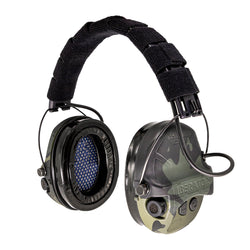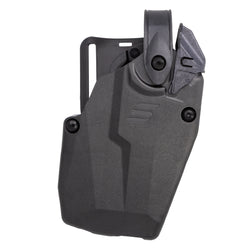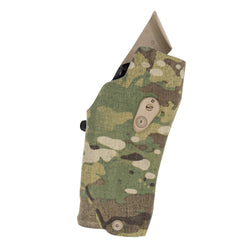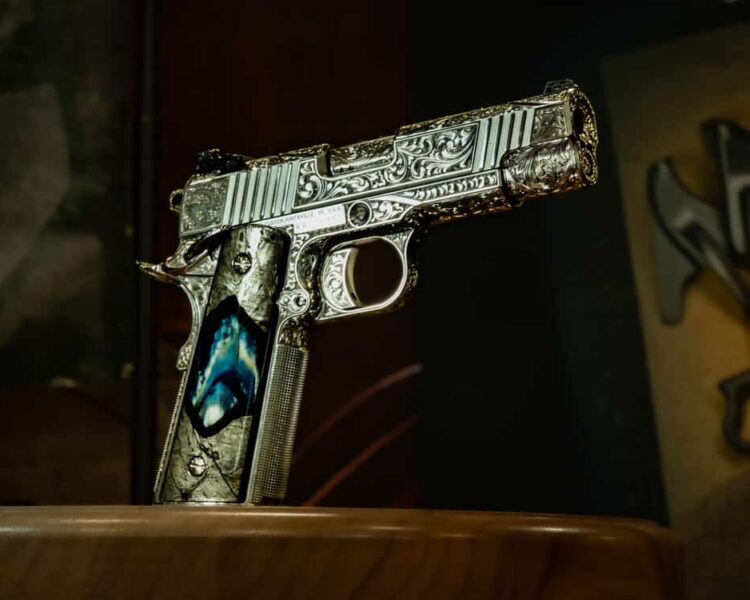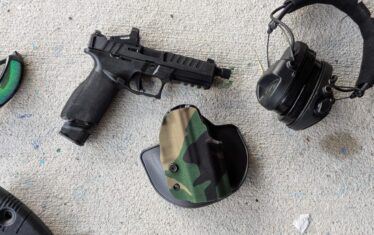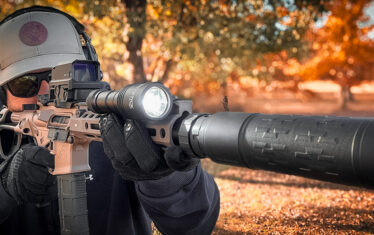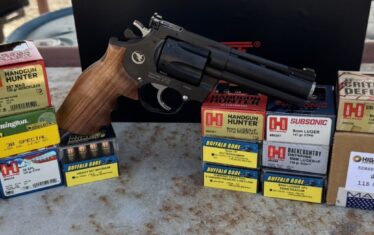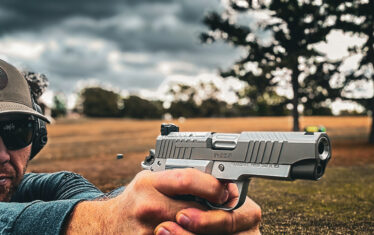Custom 1911 pistols have always been a weakness of mine. While rack-grade, military-surplus, bone-stock 1911s from WW2 are beautiful in their own right, you can’t deny that a well-made 1911 with custom slide cuts, match-grade parts, exotic grips, and other modifications is eye-catching.
The 1911 is a century-old design, and gunsmiths have tinkered with the internals and aesthetics for decades. By now, one would think anything that could be done to a custom 1911 has been done.
That assumption is being proven wrong by the gunsmiths at Kings River Custom. KRC was formed with master-level gunsmiths and firearm industry professionals who know 1911s better than most.
One of the founders, Matt Riker, brings decades of experience to the KRC team. He joins the Safariland CADRE Dispatch for an interview here.
Safariland CADRE Dispatch (SCD): Thank you for taking time from the production schedule to join us. What current KRC project(s) did we pull you from?
Matt Riker (MR): First off, Kevin, thank you for having me on. I appreciate the opportunity to talk about what we’re doing here at KRC.
You actually caught me in the middle of several exciting builds. We’re deep into the 5th Alex Surmak build and design, and we’re working on our Damascus steel parts project with Jason Knight and Steve Schwarzer. We’re also building our KRC-branded machined parts line for our new e-commerce website.
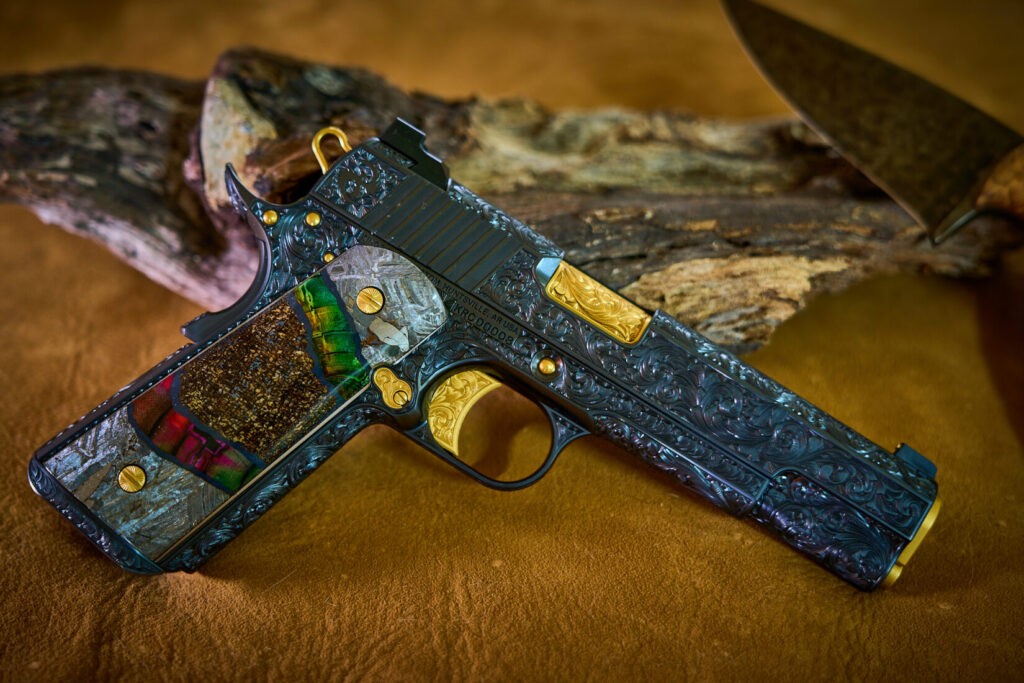
One project I’m particularly excited about is a 250-year anniversary of the United States 1911 we’re designing with Alex Surmak. That’s going to be something really special when it’s finished. And of course, we have a few other secret squirrel projects cooking as always, because that’s just how we operate here at KRC.
It’s projects like these that keep the work fresh after all these years and really showcase what’s possible when you push the boundaries of what people think has already been done with the 1911 platform.
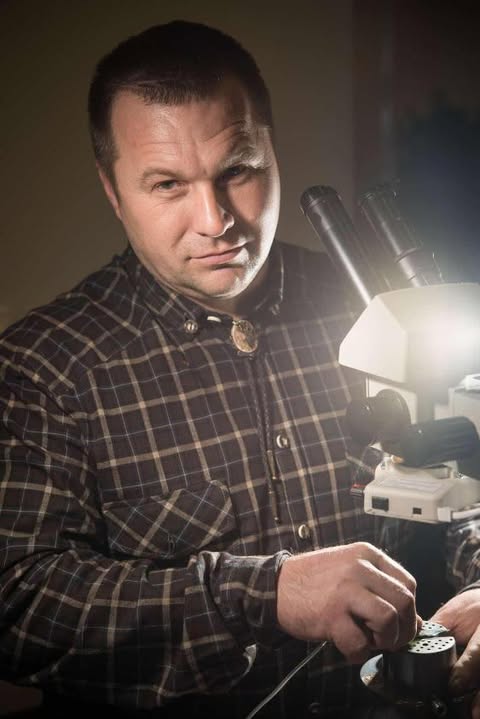
SCD: If there is a common element or thread that runs through all the employees at KRC, what is it? In other words, what is the glue that keeps your team together?
MR : You know, that’s easy to answer—it’s the relationships we’ve built over two decades of working together, combined with the sheer talent that each of the six owners brings to the table.
We’ve been through the trenches together for over 20 years now. We’ve worked side by side, learned from each other’s mistakes, celebrated each other’s successes, and honestly, we know each other better than most people know their actual brothers.
But here’s the thing—each one of these guys is an absolute master at what they do. The level of talent concentrated in this shop is honestly pretty rare to find.
When you have that kind of individual expertise and you multiply it by 20-plus years of working together, you develop this almost telepathic understanding of how each person works, what their unique strengths are, and how to complement each other perfectly. We can look at a project and instinctively know who should handle which aspect without even discussing it.
That combination of raw talent and deep familiarity is invaluable in this business. Beyond the professional side, we genuinely care about each other as people. We’ve been through life changes, family milestones, and all the ups and downs that come with building something from the ground up.
That family bond is what allows us to push each other to do better work, to take creative risks, and to maintain the standards that set Kings River Custom apart. When you’re working with family—and that’s really what we are—and when that family happens to be incredibly talented, you’re not just building guns, you’re building a legacy together.
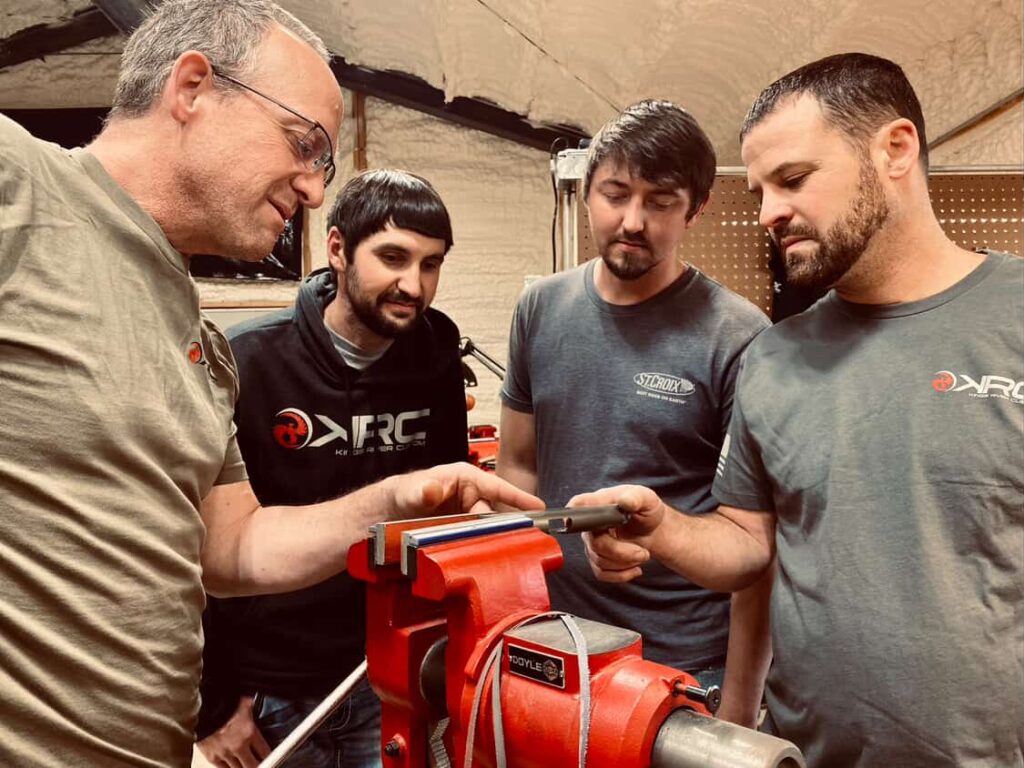
SCD: Recently, you’ve released some incredibly engraved 1911s. For those reading this who don’t understand the process, the value, the difficulty, what can you tell them?
MR: As you know, Kevin, hand engraving is truly one of the lost arts in the firearms world, and we’re incredibly fortunate to work with two of the absolute best in the business.
For our readers who might not fully appreciate what goes into this work, hand engraving is exactly what it sounds like—an artist taking a small chisel-like tool called a graver and literally cutting designs into steel by hand. There’s no machine doing the work, no computer guidance—it’s pure artistry, skill, and decades of experience guiding every single cut.
Jim Downing handles all of our Level One, Two, and Three engraving work, and the man is an absolute master. His consistency, attention to detail, and ability to execute everything from traditional scroll work to more contemporary designs is what allows us to offer engraved pieces as a standard part of our lineup. Jim’s work elevates every gun that crosses his bench.
Then there’s Alex Surmak—and honestly, Alex is the kind of engraver that comes around once in a lifetime. When we have a truly bespoke custom build that demands something extraordinary, Alex is who we turn to. His work isn’t just engraving, it’s sculpture. He can take a piece of steel and transform it into something that belongs in a museum.
The value comes not just from the time invested—we’re talking dozens of hours for even basic coverage—but from the irreplaceable human skill. Once that steel is cut, there’s no going back. One wrong move and you’re starting over. That’s what makes truly hand-engraved firearms so special and why they command the prices they do.
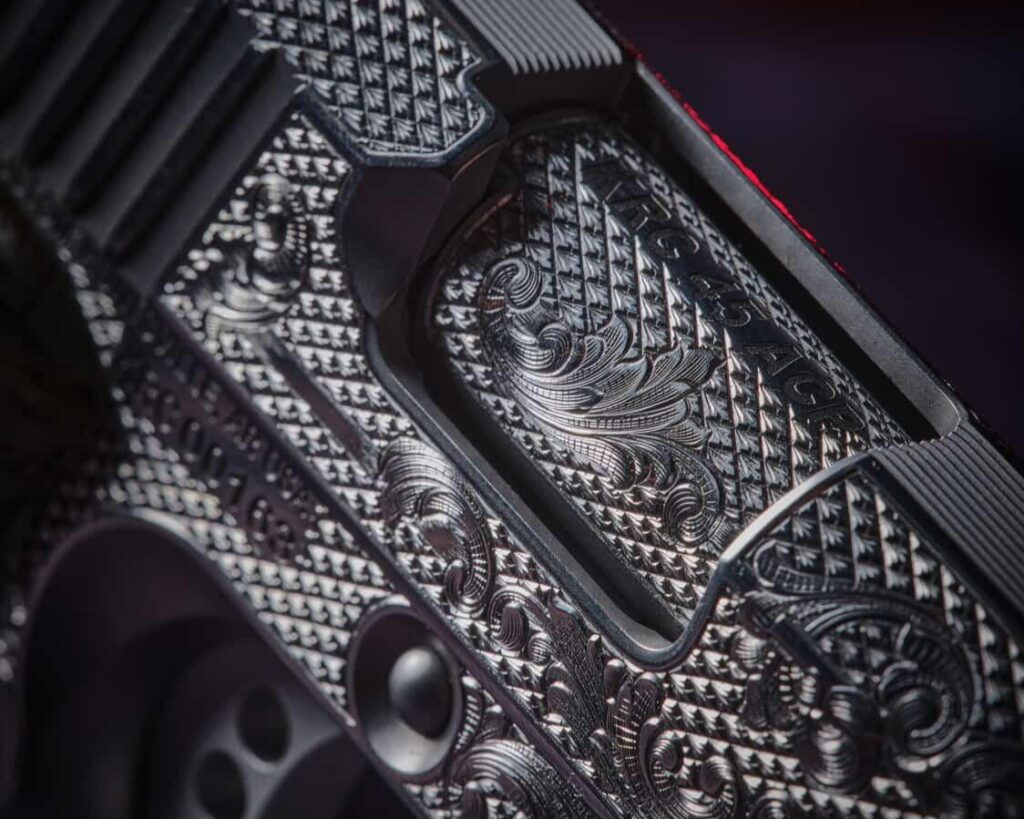
SCD: I have been using your Phoenix Fighting Gun for a year now. In a way, it is sort of your entry-level firearm, but in reality, it is far from basic. Tell us about the features it has and why those features make it a “fighting” gun.
MR: Kevin, I’m glad you’re getting good use out of that PFG—and you’re absolutely right, calling it “entry-level” is misleading because there’s nothing basic about how we build it. The Phoenix Fighting Gun might be our most accessible price point, but it gets the same level of craftsmanship as everything else that leaves our shop.
I know you went with the Light Rail on yours—that’s a smart choice for a true fighting gun. That integrated rail system isn’t just bolted on as an afterthought like you see on some production guns. We machine it as part of the frame, so it maintains the structural integrity while giving you that tactical capability. The fact that you can mount a quality light or laser without compromising the gun’s reliability or accuracy is exactly what the PFG is about—real-world functionality built to our standards.
Here’s the thing—you’ll find semi-custom 1911s out there for $6,000 to $7,000 that have the same feature list as your PFG, but they’re not built the same way. We use only fully machined parts, and we spend as long as it takes to fit all the parts by hand.
We hand fit everything, starting with oversized parts, using handcraft, files, and decades of knowledge that tells us what the steel should feel like through the file. That tactile feedback, that understanding of how metal responds to proper fitting—you can’t get that from a machine or teach it in a classroom.
The “fighting gun” designation comes from features like that Light Rail—we prioritize what actually matters in a defensive situation: a crisp trigger that breaks consistently every time, sights that won’t fail you when it matters, the ability to positively identify your target in low light, and reliability that you can stake your life on.
What really sets the PFG apart is that we apply the same attention to detail that most companies can’t achieve on their more expensive builds, because frankly, they don’t have the experience to fit a custom 1911 like the team at KRC does. Your gun with that Light Rail gets that same level of care—it’s built for work, not the display case.
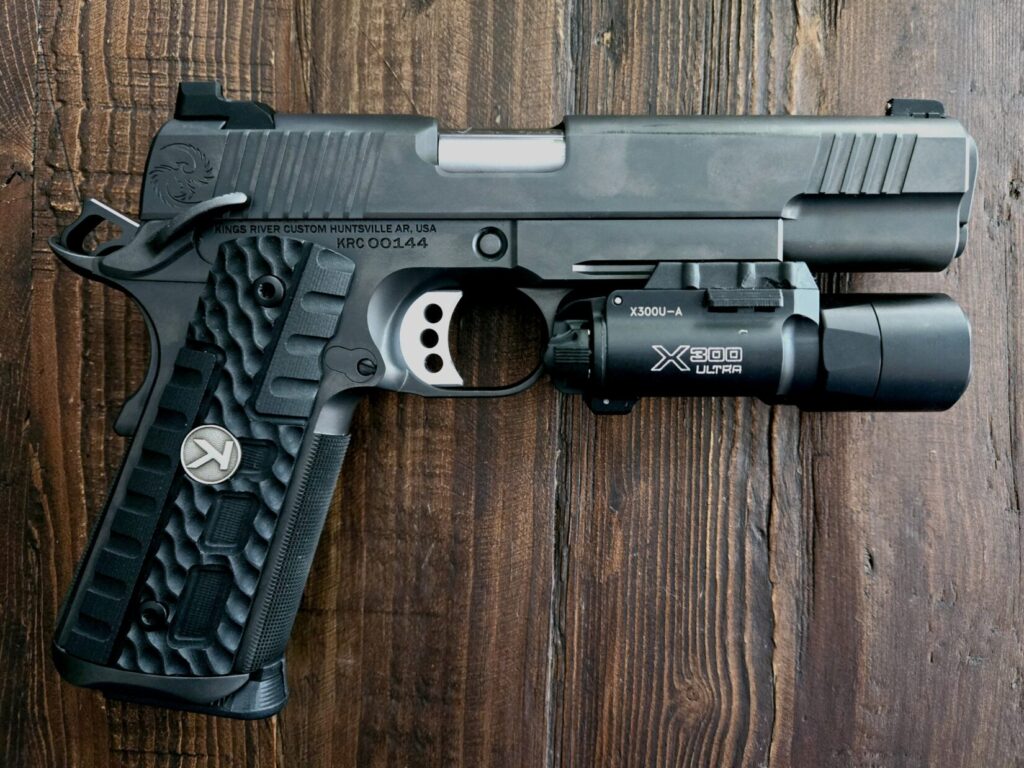
SCD: Some pistols come with plastic boxes, some come with range cases, and some of your pistols come in the most ornate wooden display cases. Why does presentation matter to you?
MR: You know, presentation absolutely matters to us because it’s part of showing respect—respect for the craft, respect for the customer, and respect for what these guns represent. When someone invests in a Kings River Custom build, they’re not just buying a firearm, they’re commissioning a piece of functional art that represents hundreds of hours of skilled labor.
KRC is always looking to up the ante on our finished product, and that extends to how we present and deliver our builds to show our customers more respect. We work with a custom box maker who lives just 30 miles from our shop to create these beautiful walnut display cases. It’s not just about looking pretty—though they certainly do—it’s about giving our customers something worthy of what’s inside.
We’re also working with Negrini right now to design a new line of custom lockable hard cases as additional options for every KRC pistol. We’re literally working on that as I type this, because we understand that some customers want a museum-quality presentation while others need something they can transport and use.
But the pinnacle of our custom display work has to be our Surmak collection boxes. These things are incredible—24 inches tall, 18 by 18 inches square, with a custom soft-close drawer under a four-sided glass case above. We’ve got LED lighting in the lid and a lazy susan to mount your Surmak/KRC build on that spins to showcase the incredible work from every angle. When you’ve commissioned something at that level, the presentation needs to match the artistry.
It all comes back to respect—when you put that much passion and skill into creating something, the way you present it to the customer should reflect that same level of care and attention to detail.
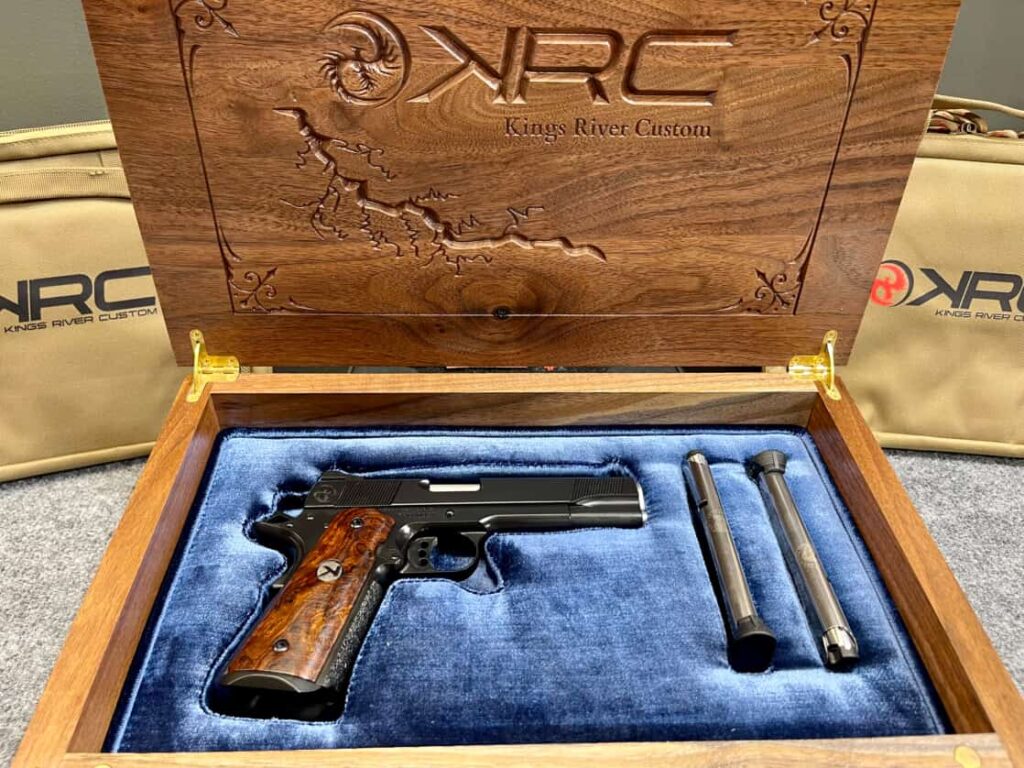
SCD: Let’s talk about the elephant in the room. .45 ACP isn’t 9mm, and there are many 9mm 1911/2011s coming out. What is it about the .45 ACP, and why are they still popular?
MR: You’re absolutely right—we can’t ignore the fact that 9mm has become the dominant cartridge in the tactical and competitive world, and there are some fantastic 9mm 1911s and 2011s out there. But here’s the thing about .45 ACP—it’s not just a cartridge, it’s the soul of the 1911.
John Moses Browning designed this gun around the .45 ACP cartridge. The timing, the recoil impulse, the way the gun cycles—everything was engineered specifically for that big, slow .45 caliber bullet. When you shoot a .45 ACP 1911, you’re experiencing the platform exactly as Browning intended it. There’s something pure about that.
From a ballistics standpoint, .45 ACP still has advantages that matter to a lot of people. You’ve got a larger diameter bullet that creates a more substantial wound channel, and it does it at subsonic velocities, which means it’s naturally suppressor-friendly without having to worry about the sonic crack. For home defense or situations where you want maximum stopping power in a single shot, that .45 still delivers.
But honestly, a lot of it comes down to feel and tradition. The .45 ACP has this distinctive recoil impulse—it’s more of a push than a snap. Experienced shooters often find it more controllable and pleasant to shoot than the sharper recoil of 9mm. And there’s something to be said for the psychological effect—both on the shooter and, frankly, on anyone who might be on the wrong end of it.
We believe in .45 ACP so much that when we start building 2011s, that cartridge will be a major focus in our 2011 project, even though we know there aren’t many custom shops building them in .45. We love a challenge, and honestly, that’s exactly the kind of project that gets us excited.
The .45 ACP 1911 represents over a century of proven performance. When something works that well for that long, there’s usually a good reason people keep coming back to it.
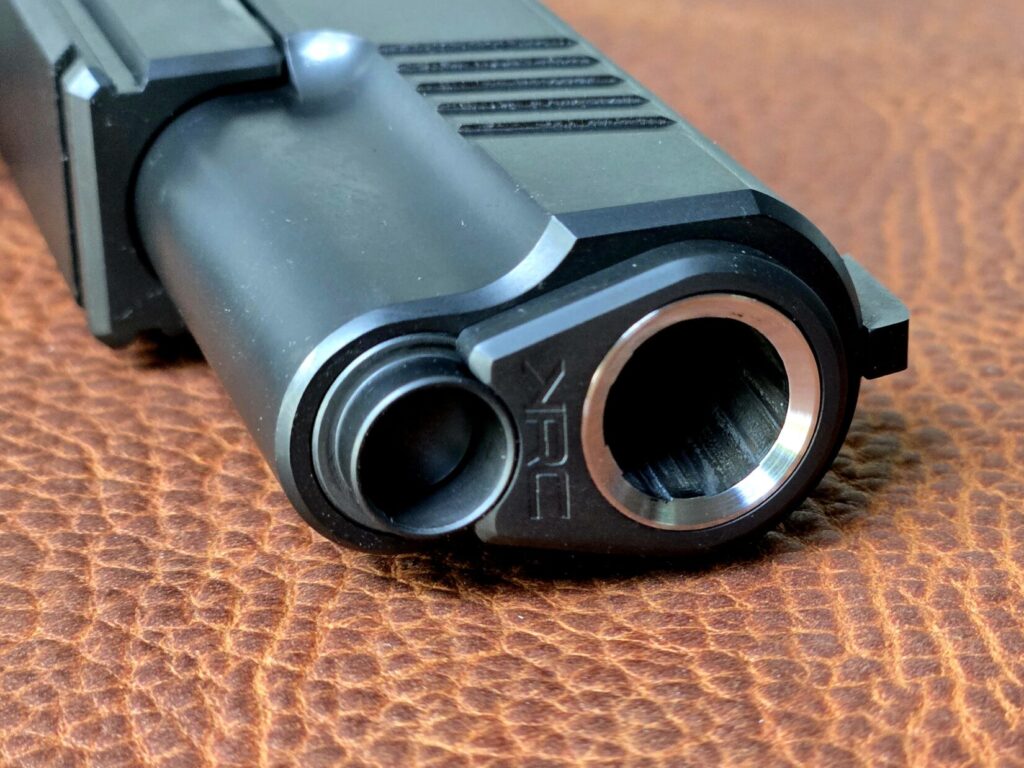
SCD: You’ve stated before that the company is employee-owned. How does this structure differ from other custom shops, and how is it more beneficial?
MR: The employee ownership structure makes all the difference in how we operate, and honestly, it’s pretty rare in the custom gun world. Most shops have an owner or maybe a couple of partners, and then everybody else is just drawing a paycheck. Here at KRC, all six of us aren’t just employees—we’re all owners with real skin in the game.
What that means practically is that every decision we make, every gun that goes out the door, every customer interaction—we’re all equally invested in the outcome. There’s no “that’s not my department” mentality because it’s all our department. When you’re an owner, you care about the long-term reputation of the company in a way that’s just different from being an employee, no matter how dedicated that employee might be.
From a quality standpoint, it eliminates a lot of the corner-cutting that can happen in other shops. When someone else owns the business and you’re trying to hit production numbers or keep labor costs down, there can be pressure to rush or compromise. When we’re all owners, we all understand that our reputation—and our livelihood—depends on every single gun being built to our standards, regardless of how long it takes.
It also means we can make decisions quickly without having to run everything up the chain to some distant owner or board of directors. If we see an opportunity to improve our process, try a new technique, or invest in better equipment, we can make that call as a team. We’re building this business for ourselves, which means we’re building it for the long haul.
Most importantly, it means every one of us is committed to maintaining the level of craftsmanship that sets KRC apart, because we all share in the success or failure of that commitment.
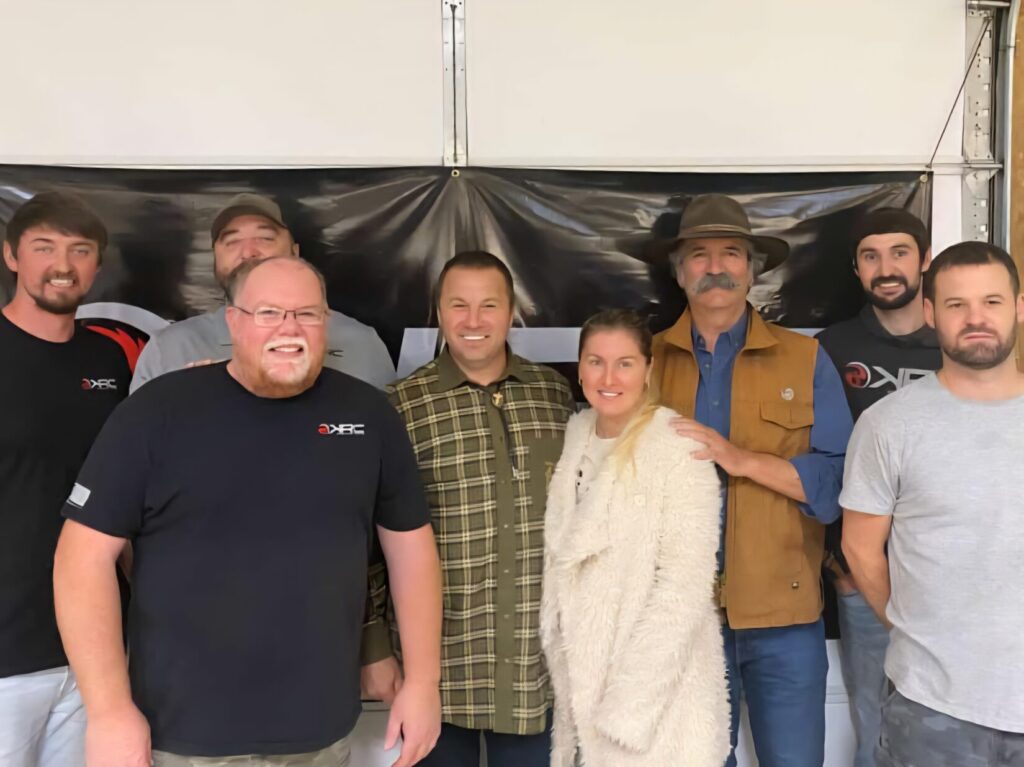
SCD: Speaking of gunsmiths, your guys have a lot of experience building not only 1911s but also other popular platforms. Is there another type of firearm on the horizon for KRC?
MR: You’re right, Kevin. Our team has deep experience across multiple platforms, and we’re definitely looking at expanding beyond traditional 1911s. The 2011 platform is really where we’re focusing our attention next.
What excites us about 2011s is that we can bring our level of craftsmanship to a platform that’s exploding in popularity, especially in the competition world. We’re planning to build stainless steel and carbon steel grips for 2011s specifically so we can utilize our custom finishes and grip materials. Most 2011s come with polymer grips, but imagine having the same level of custom engraving, exotic materials, and finishing options that we offer on our 1911s available on a double-stack platform.
But we’re also looking beyond just firearms themselves. We’re planning some exciting collaborations with other makers to offer complete packages. Think Alex Surmak engraving paired with custom knives from makers like Jason Knight, Tristen Knight, or Adam Desrosier’s work. When someone commissions a high-end piece from us, why not offer them a matching custom knife that showcases the same level of artistry and attention to detail?
These collaborations make sense because they’re all artists working at the same level we aspire to. It’s about creating complete experiences for our customers—not just selling them a gun, but connecting them with other craftsmen who share our philosophy about doing things the right way, regardless of how long it takes.
The common thread through everything we’re considering is maintaining that same standard of craftsmanship and hand-fitting that defines Kings River Custom. Whether it’s a 1911, a 2011, or a collaboration piece, it’s going to get the same level of care and attention to detail.

SCD: The pistols are a work of art with color-case hardened steel and exotic grips, but we know what makes your company a premier custom 1911 maker is the service side of the house. What kind of service or customer experience can buyers expect when they buy a KRC pistol?
MR: You know, the visual aspects—the color-case hardened steel, the exotic grips, the engraving—that’s what catches people’s attention initially. But what really sets us apart as a premier custom 1911 maker is the service side of the house.
When you call KRC, you’re not getting some kid reading from a script or bouncing between different departments. You get me—the CEO—and I’ve got over 20 years of customer service and sales experience specifically in high-end firearms and knives. I understand what you’re looking for before you even finish explaining it, and I can walk you through every aspect of your build from concept to completion.
My cell phone number is right there on our website—and that screams the ultimate experience when buying a custom 1911 or 2011. How many CEOs of custom gun companies can you call directly on their personal cell phones? That personal touch matters when you’re making an investment at this level. You’re not just buying a gun off a shelf—you’re commissioning a custom piece that should reflect your preferences, your needs, and your vision. That requires real conversation, not a catalog order form.
When you’re working with us, you’ll know exactly where your gun is in the process, who’s working on it, and when you can expect it. If you have questions or want to make changes along the way, you’re talking directly to the people who are actually building your gun. There’s no middleman, no corporate bureaucracy—just craftsmen who are as invested in your project as you are.
We also stand behind our work completely with a lifetime warranty that follows the gun, not the original buyer. So your kids will enjoy the same peace of mind owning a KRC pistol as you do today. If something isn’t right, we make it right—period. When you’re dealing with the people who actually own the company and built your gun with their own hands, accountability isn’t just a policy; it’s personal.
That level of service is what turns customers into lifelong advocates for what we do here at KRC.
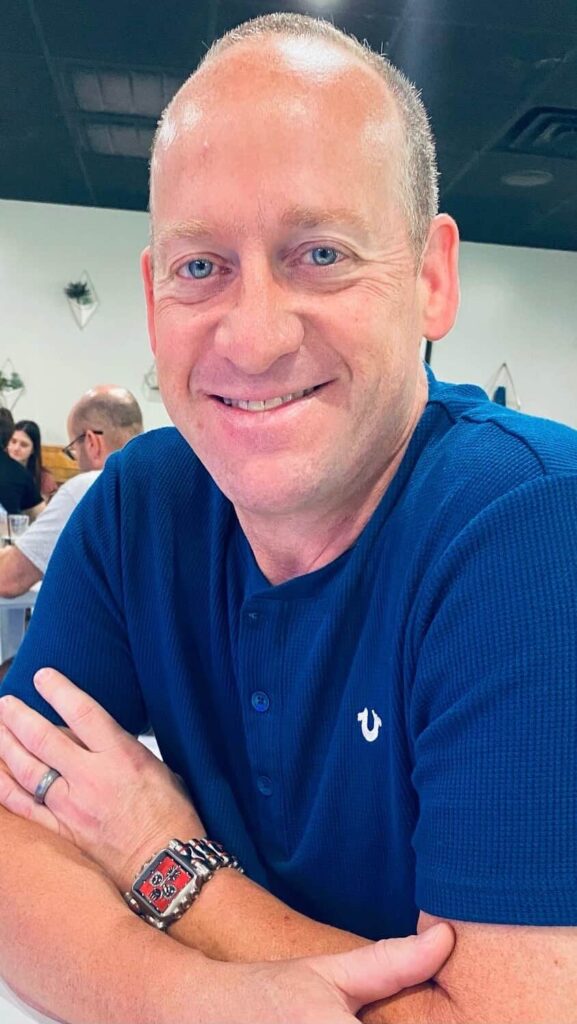
SCD: The 1911 is over one hundred years old and, as the memes remind us, it has won two world wars. Why should shooters who have grown up in an era of mostly polymer pistols pick up an all-steel single stack?
MR: That’s a great question, and I think it comes down to what kind of shooter you want to be. The 1911 has indeed won two world wars and served this country for over a century, but beyond the historical significance, there’s a fundamental training advantage that a lot of people overlook.
I liken using striker-fired polymer guns exclusively to having AI do your homework—if you don’t use your brain to ensure safety with a firearm, then you’re one step behind when it counts. The 1911 forces you to be deliberate, to understand the mechanics of what you’re doing, and to develop real fundamentals.
Train with the best trigger in the business—and single-action triggers like on 1911s and 2011s are exactly that—and you will learn correct trigger control, breathing, sight acquisition, and how to point at the target and get quality results that you just can’t acquire on a striker-fired pistol. The crisp, clean break of a properly tuned 1911 trigger teaches you what good trigger control actually feels like.
When you master shooting a 1911 well, you can pick up any other platform and shoot it better than you would have otherwise. But if you only train on guns with spongy triggers and multiple safety systems doing the thinking for you, you’re not developing the fundamental skills that make you a truly competent shooter.
The all-steel construction also provides benefits—better recoil management, more consistent point of impact, and a gun that feels substantial and purposeful in your hands. There’s something to be said for a firearm that has presence and demands respect.
The 1911 doesn’t just make you a better 1911 shooter—it makes you a better shooter, period.
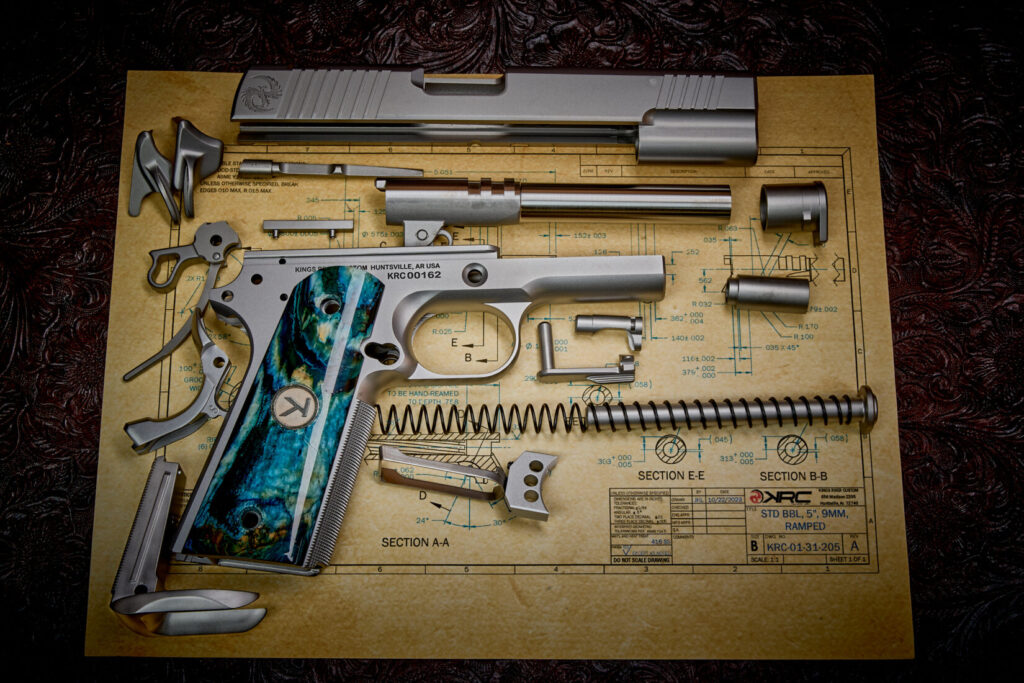
SCD: We’ve covered a lot in this one. What else is left to say? We’re going to give you the final word to brag, promote, or simply add anything we’ve missed.
MR: Well, if you’re giving me free rein to brag, I guess I should start by saying we build some pretty incredible guns! But honestly, what I’m most proud of isn’t just the firearms themselves—it’s the relationships we’ve been able to build in this industry.
We’ve been blessed to work with amazing industry partners like you, Kevin. The fact that someone with your experience and reputation in the firearms world chose to carry one of our PFGs and now trusts us enough to feature KRC in Safariland CADRE Dispatch means everything to us. That’s not lost on any of the six owners here.
It’s pretty remarkable that we’re only 18 months old as Kings River Custom, but the response from people like yourself, from our customers, and from other industry professionals has been incredible. We’re constantly striving to keep building relationships with new industry folks, while also building upon the relationships that have gotten KRC to this point—like the one we’re blessed to have with you, Kevin.
Those relationships matter because they’re built on mutual respect for craftsmanship and doing things the right way. When we collaborate with Alex Surmak on engraving, or work with Jim Downing, or partner with Jason Knight on our Damascus projects, it’s because we all share the same philosophy about never settling for “good enough.”
At the end of the day, we’re just six guys who are passionate about building the best 1911s and 2011s we possibly can, treating our customers like family, and staying true to what makes this platform special. The fact that people like you are along for the ride makes it that much better.


